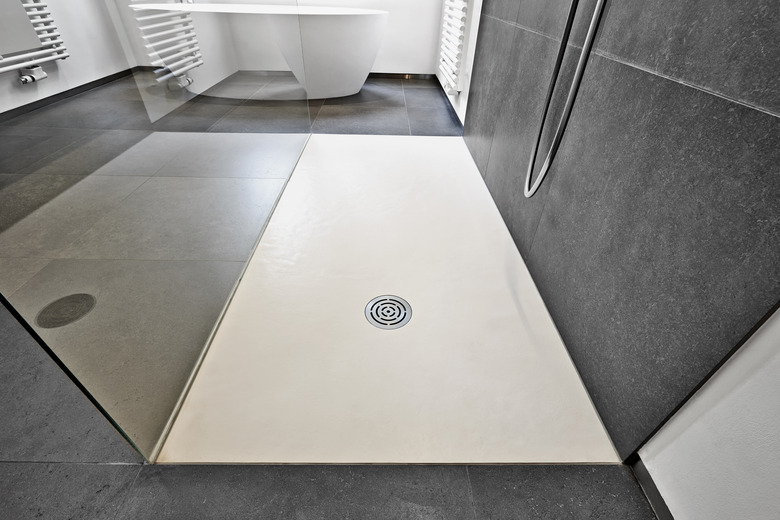Acrylic Vs. Fiberglass Shower Pans
We may receive a commission on purchases made from links.
The bottom of a shower is known as a shower pan, shower base or shower tray. These pans are designed for safety, to support the pressure and weight of people as they shower every day as well as properly contain and drain water and cleaning substances.
Shower pans can be made of several types of materials, even concrete, and some pans being constructed of more than one material. Acrylic and fiberglass are two of the most common shower pan materials. Knowing the qualities of each type of shower pan can help homeowners choose the appropriate one for them.
Comparison of Shower Pan Materials
Comparison of Shower Pan Materials
Acrylic is considered a type of plastic that has the look of glass but is safer and more flexible. These pans are heated, stretched, molded into their shapes and they're often hybrids, which are reinforced with fiberglass. Acrylic is also commonly used for other parts of the shower, such as the door, enclosures or fixtures.
With fiberglass, thin fibers of glass are woven together in layers to create a hard and durable, yet flexible surface. Fiberglass also typically contains resin to help form and mold it into specific shapes, such as a shower pan.
Pros and Cons of Acrylic
Pros and Cons of Acrylic
Shower pans made of acrylic are built to last through thousands of showers, tons of pressure and the daily abuse of sprayed water and abrasive soaps, hair and cleaning products. They are completely water-resistant and will not corrode over time, and scratches are rarely seen.
Acrylic shower pans are also lightweight and considered easy to install. The major downside of acrylic is its cost, which is higher when compared with most other shower pan materials. For example, a 60 x 36-inch acrylic shower pan may cost approximately $500, compared to a fiberglass shower pan of the same size that costs closer to $300. Acrylic also will burn or melt under a direct flame.
Pros and Cons of Fiberglass
Pros and Cons of Fiberglass
Fiberglass shower pans are generally cheaper and, therefore, a popular option, especially for people who wish to install the shower pan themselves. Like acrylic, fiberglass shower pans are extremely durable, but they are more likely to crack or break. They are also more commonly used for fitting showers into inconvenient locations and shapes, and shower additions such as a seat are commonly made with fiberglass.
However, fiberglass is also sensitive to extreme heat and can corrode with frequent use of cleaning products, especially those that are acidic. Fiberglass can also be a breeding ground for bacteria if there are corners in odd places.
Choosing Your Shower Pan
Choosing Your Shower Pan
Many factors should go into choosing the appropriate shower pan for your bathroom. Beyond the characteristics of the materials, the size of the bathroom and shower as well as its placement are important.
Ease of cleaning should also be considered, and some opt to go with the simple chrome shower pans for this reason. Cost is a primary factor, but spending the money upfront on a higher quality acrylic or fiberglass pan may save money compared with a cheaper pan that needs replacing later.
